What is bring your own device?
‘Bring your own device’ or BYOD is more commonplace with the advent of personal mobile phones, tablets and the like, although it is common in productions where freelancers might bring their own cameras or similar equipment.
Where equipment is employee owned, if it is in the workplace there is a legal requirement to ensure it is kept safe and, as an employee, you have duties to do so as well. Equipment owned by employees (such as mobile phone chargers or laptop power supplies for example) should be subjected to the same checks as ����ý-owned equipment. Guidance on the checks to do are explained in guidance on equipment safety pages (see links).
If you are unsure of whether your electrical devices are safe or need checking, request a formal inspection and test from your line manager.
If you are a freelancer (even if on a long-term contract) using your own equipment, you have general duties under the law to maintain your equipment and you must be able to provide the ����ý with evidence of electrical safety inspection and/or testing such as ‘PAT’ records. This is a requirement regardless of whether you hire the equipment to the ����ý or supply it as part of your work.
����ý Safety have developed a new t on the safety of contributor's electrical equipment at ����ý premises. It summarises the key safety requirements for the connection of electrical equipment into ����ý electrical systems. This will include, for example, performing artist's musical instruments plugged into studio electrical supplies.
It explains what safety testing and documentation may be required, and where responsibility rests for checking these are in place.
What Can Go Wrong?
Injuries or fires arising from:
- Damaged or broken equipment
- Chaffed, cut or other damage to electrical cables
- Damage to plugs and sockets such as bent pins, damaged cases, signs of overheating or exposed wires
- Inappropriate use of equipment (e.g. connecting a European style plug into a UK style socket)
����ý Legal Requirements
- The Electricity at Work Regulations 1989 (EAWR) require electrical equipment in the workplace to be maintained, regardless of ownership (e.g. employee-owned, leased or hired)
- The EAWR requires employees to ensure they keep their equipment in good order and to help the employer to do so.
- Freelancers bringing their own equipment must be able to provide evidence of electrical safety checks for it.
- Guidance on what checks to do and how often they should be done is available on the Safety of electrical equipment pages. Most employee owned equipment is likely to be low-risk and simple visual checks on each use may be all that is required.
- Employees must not use any electrical equipment (whether their own or not) if they suspect it of being damaged or dangerous. If safe to do so, disconnect it and take it out of service and report it as a near miss on the Safety Hub.
Division Specific Issues
- This guidance applies across the ����ý.
Recommended links
-
Certificate in Temporary Electrical Systems Electrical safety training course designed to ensure those working with electricity in temporary distribution systems on productions can comply with BS 7909
Useful documents
-
[����ý Network only]
-
[����ý network only]
-
(����ý Network only)Version 3. May 2023
����ý electrical safety topics
-

Electrical safety homepage
A selection of guidance documents and general advice in relation to Electrical Safety in ����ý premises, on productions and events. -

����ý policies for electrical safety
����ý policies detailing its overarching approach to the management of electrical safety. -

����ý electrical safety guidance documents
Summary of ����ý electrical guidance (links within document titles) -
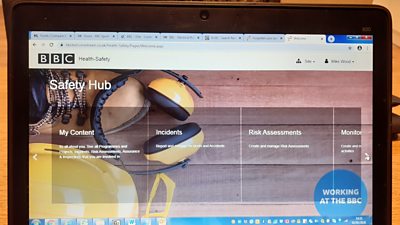
Electrical risk assessments and reporting of incidents
This section will help those who need to do a risk assessment where electricity is being used. It also gives guidance on reporting requirements for any electrically-related incident. -

Electrical safety in ����ý Premises
General guidance on use of electricity and electrical equipment when working in ����ý Premises. -

Electrical safety in Studios
A straightforward guide to electrical safety management in studios and similar locations. -

Safety of electrical equipment and appliances
Requirements for electrical safety of electrical equipment and appliances (‘PAT testing’). -
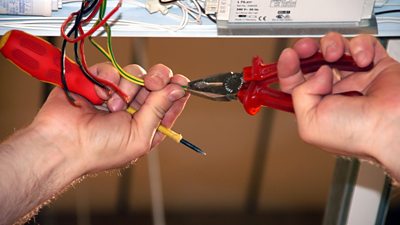
Electrical competency and Part P requirements
Guidance on what to look for when employing contractors or freelancers to do electrical work. -
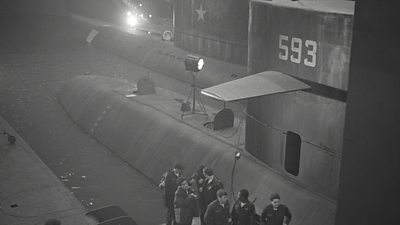
Electrical safety requirements for Production Managers
Find out what you should know and what measures should be put in place for your production. -

Bringing your own equipment to work and contributor’s equipment
Basic guidance on the safe and appropriate use of personal electrical equipment whilst at work and requirements. -
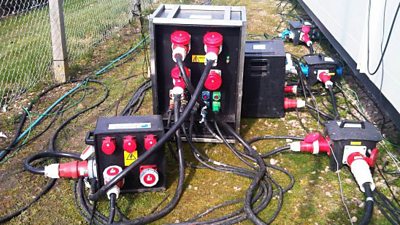
Temporary electrical systems and BS 7909
Requirements for electrical safety management in accordance with BS 7909 for all temporary electrical systems. -
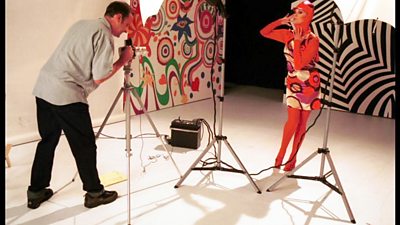
Small and Simple Temporary Electrical Systems
Guidance to help understand the requirements for simple temporary electrical systems such as interviews or photo shoots for example. -
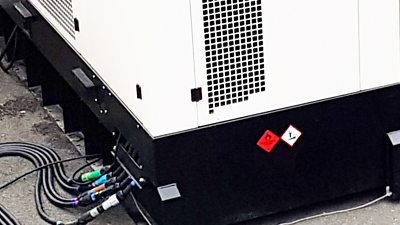
Generators
Guidance on the use of temporary generators including the application of earth electrodes. -
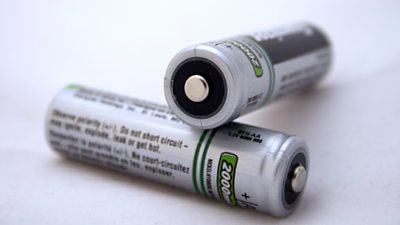
Batteries
Guidance on the safe use and storage of batteries. -
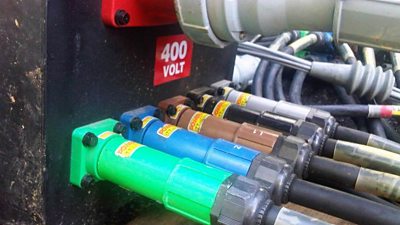
Certificate in Temporary Electrical Systems
An electrical safety training course designed to ensure those working with electricity in temporary distribution systems on productions can comply with BS 7909 and the relevant parts of BS 7671. -
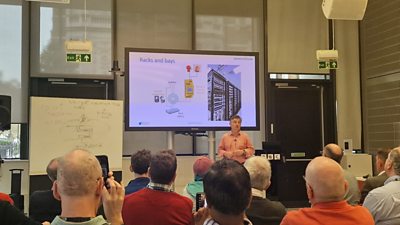 Electrical Principles Workshop to harmonise the approach to health and safety management on electricity across all areas.
Electrical Principles Workshop to harmonise the approach to health and safety management on electricity across all areas. -

External information and guidance on electrical safety
Links providing further information on all aspects of electrical safety, from external bodies (IET, HSE, Etc.) that ����ý staff may find useful. Some guidance is required to be purchased. -

Health & safety Alerts and News
All the Health & Safety Alerts and News from the H&S Teams
More from SSR
-
Your platform to record accidents, risk assessments, assurance monitoring and inspections
-
Safety Equipment Stores
Just one number to call: 0844 800 8875 -
����ý Safety Guidelines
An A-Z of ����ý's Health and Safety Guidelines -
Safety Advice Line: 0370 411 0464 Email: safety@bbc.co.uk
Events guidance - key links:
- Exhibitions
- General Guidance
- Indoor Location Recce Checklist
- Outdoor Location Recce Checklist
- Major Incidents & Emergency Planning
- Marketing and Promotional
- Noise Exposure
- Planning and Management
- Responsibilities
- Responsibilities Form
- Laser Lighting Effects
- Strobe Lighting
- Temporary Stages and Rostra
Health topics - key links:
- (����ý network only)
- Contributors Fitness to Participate
- Display Screen Equipment (DSE)
- (����ý network only)
- First Aid and Welfare on Location
- International Travel - Risks & Health
- Manual Handling
- Mental Health: Homepage
- (����ý network only)
- Personal Health and Wellbeing
- Pregnancy
- Psychological Trauma Support & Trauma Risk Management (TRiM)
- Tiredness and Fatigue
- Travel Health Contacts
����ý High Risk - key links:
- CBRN and Industrial Spills
- Covert Filming
- Crisis Management and Security Support
- Demonstrations, Protests and Crowds
- Disaster Coverage
- Door Stepping
- (����ý network only)
- (����ý network only)
- Public Order
- Safety Equipment Stores
����ý Journalism - key links:
����ý Productions - key links:
- Aerial Filming and Airfields
- Animals: Displaying and handling for performance
- Boats: Working on
- Children and Young People
- Driving
- Electrical Equipment and Systems
- First Aid and Welfare on Location
- Food Safety (Cooking and Catering)
- Remote Location Working
- Roads and Streets: Working by
- Security of Productions on Location
- Stunts
- Tiredness and Fatigue
- Unmanned Aerial Systems (UAS aka Drones)
- Vehicles: Recording in, from and around
- Working at Height: Mobile Elevating Work Platforms
- Working at Height: Tower Scaffolds
����ý Radio - key links:
- (����ý Network only)
����ý Security - key links:
����ý Sport - key links:
About this site
This site describes what the ����ý does in relation to managing its health, safety and security risks and is intended for those who work directly for the ����ý.
It is not intended to provide instruction or guidance on how third parties should manage their risks. The ����ý cannot be held liable for how this information is interpreted or used by third parties, nor provide any assurance that adopting it would provide any measure of legal compliance. More information
Some links on this site are only accessible when connected to the ����ý network
